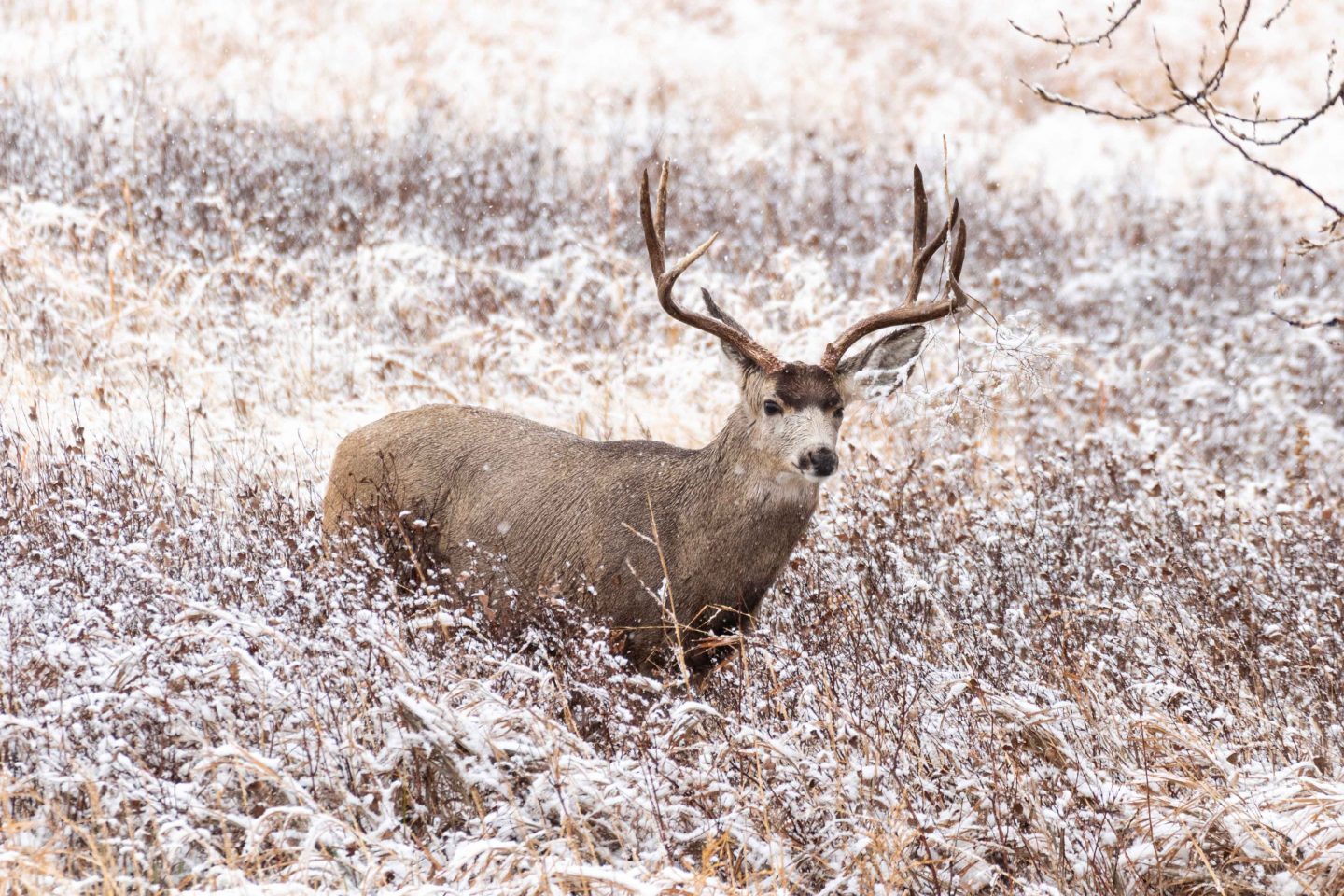
By Monica Macoubrie, Wildlife Education Specialist
Nebraska is home to two distinct species of deer: the white-tailed deer (Odocoileus virginianus) and the mule deer (Odocoileus hemionus). Though both species belong to the Cervidae famiily and are often found in overlapping habitats, they exhibit several notable differences in physical characteristics, behavior and habitat preferences.
Physical Differences
The physical distinctions between white-tailed deer and mule deer are immediately noticeable. White-tailed deer are generally smaller than mule deer, standing about 3.5 feet at the shoulder and weighing between 100 and 300 pounds, with males being larger than females. They have a sleek, compact build with slender legs, which aids in their ability to move quickly through dense forest or suburban areas. In contrast, mule deer are typically larger and more robust, standing around 3.5 to 4 feet at the shoulder and weighing 150 to 350 pounds. Mule deer have a more muscular build and longer, stronger legs, which are well-suited for traveling across rugged terrain.
One of the most striking physical differences is their antlers. Both species shed their antlers annually, but mule deer antlers tend to be more open and complex in structure compared to the white-tailed deer’s antlers. Whitetail antlers are usually less branched and symmetrical, with a “Y” shape and tines that point upward and outward. Mule deer antlers are much larger and more irregular, with multiple tines that spread horizontally, often creating a broader, more impressive appearance.
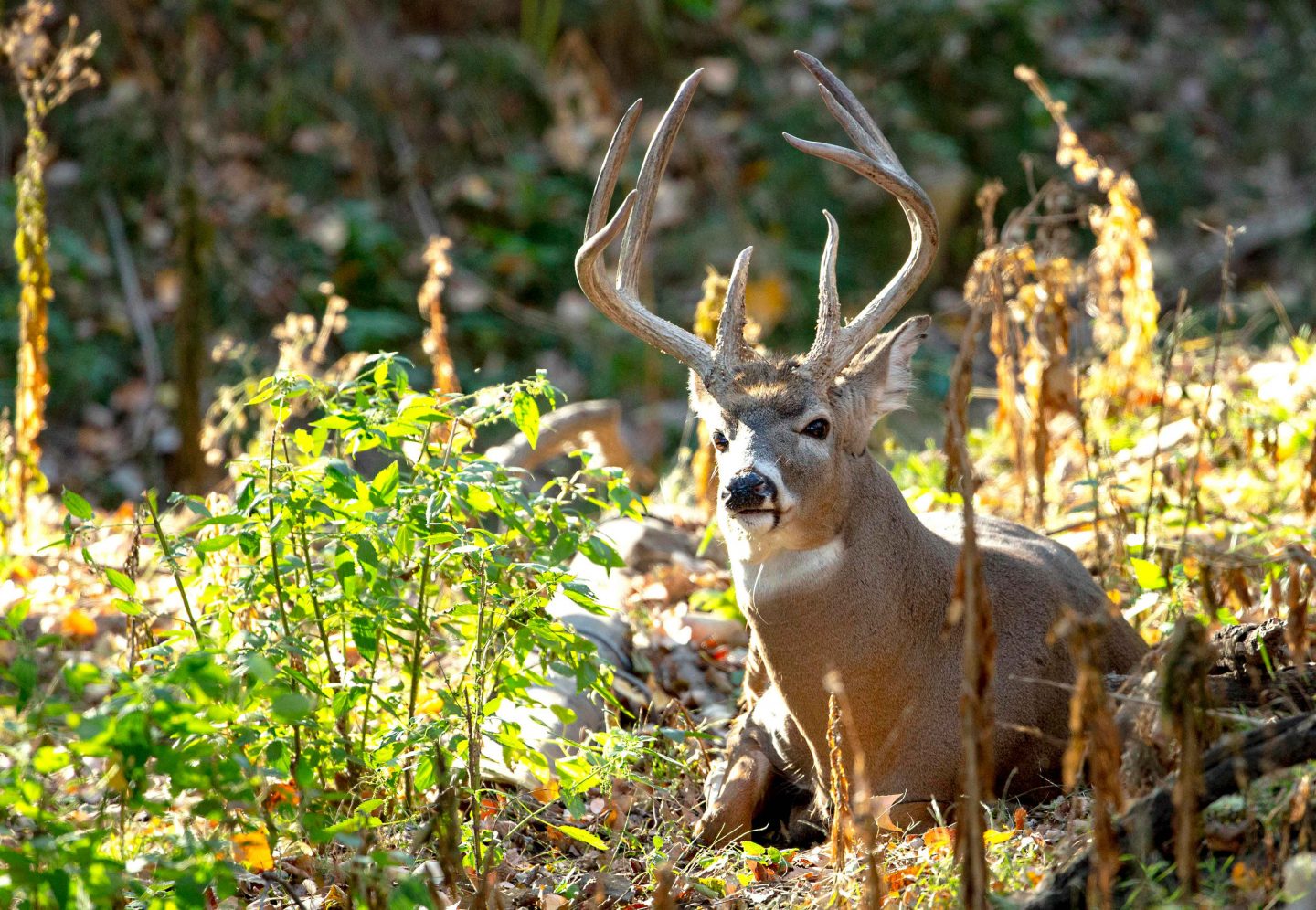
Tail characteristics also differ significantly. White-tailed deer have a distinct white underside to their tail, which they raise when alarmed, signaling danger to other deer. Mule deer, on the other hand, have a tail that is wider and covered with white fur, but the underside is typically darker and lacks the bright white coloration seen in white-tailed deer.
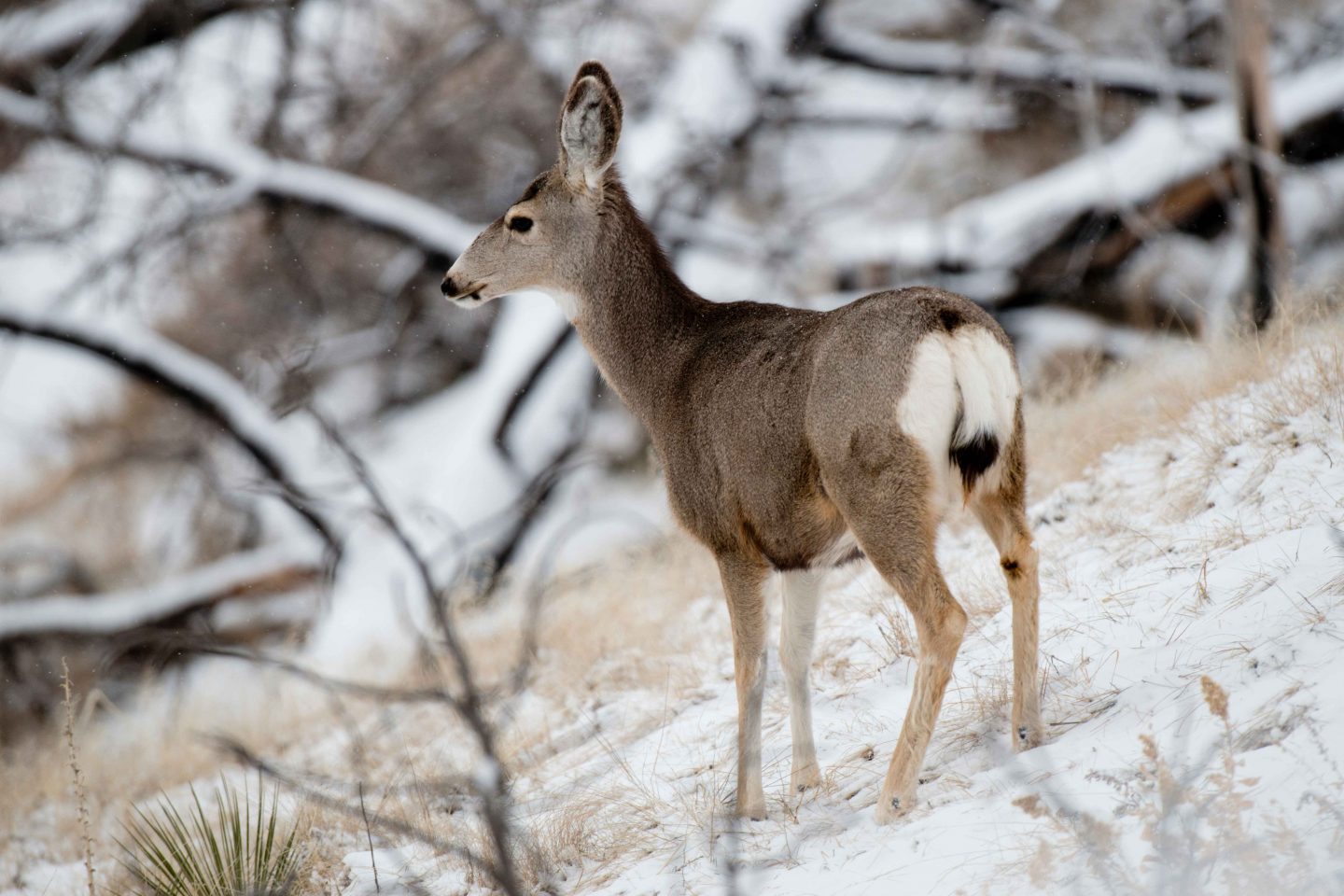
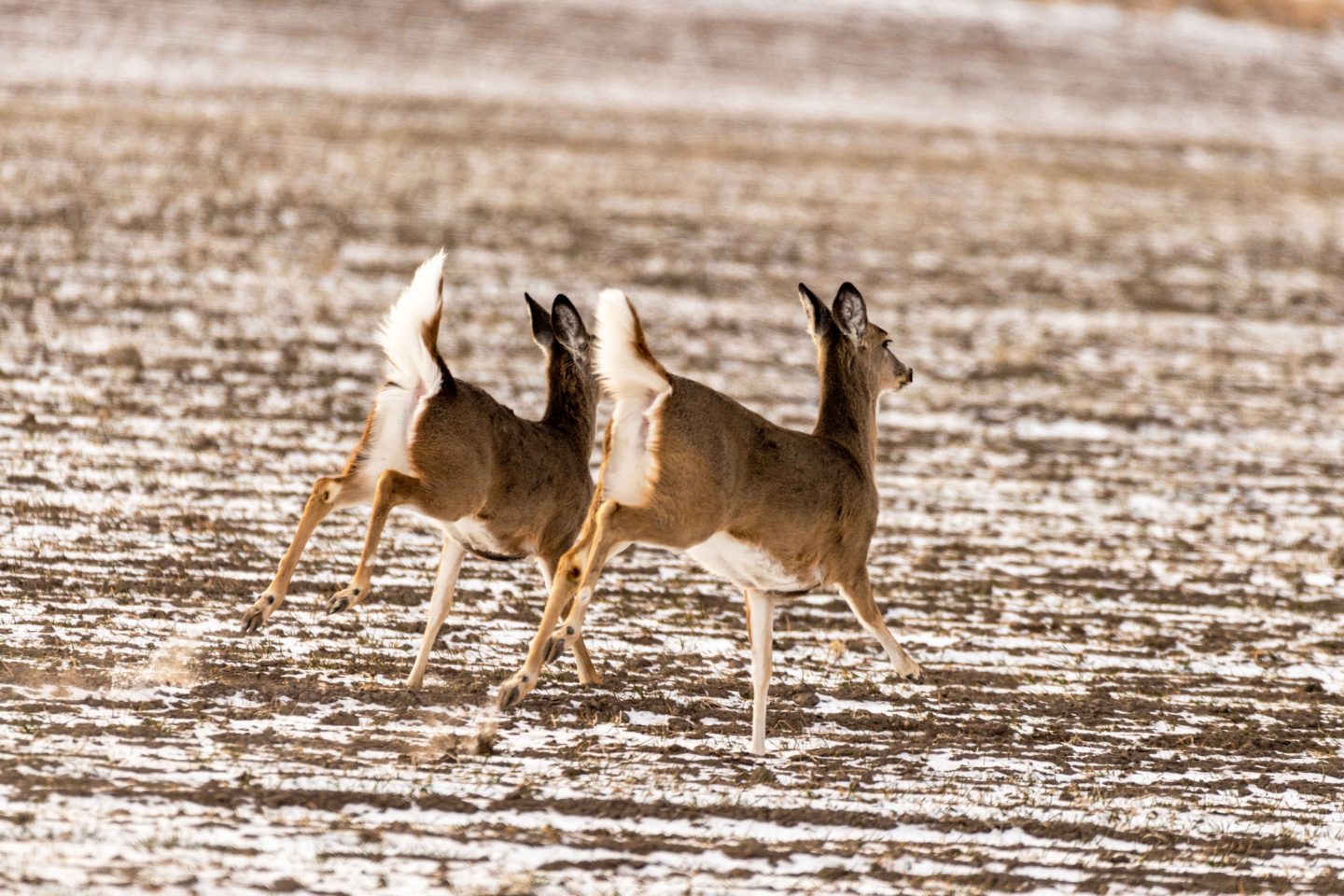
Behavior and Social Structure
Behaviorally, white-tailed and mule deer differ in their social habits and responses to threats. White-tailed deer are highly adaptable and are often found in a variety of environments, including dense forests, wetlands and suburban areas. They are known for being more social than mule deer, often forming small family groups during the non-breeding season. During the rut (breeding season), males become more solitary and compete for mates, but they are still frequently seen in small groups. White-tailed deer are also more agile and tend to rely on speed and sharp turns to evade predators. They use their tails to signal danger to other deer in the area.
Mule deer, by contrast, are more solitary and are typically found in the open landscapes of Nebraska’s western regions, including the Sandhills and Pine Ridge. They tend to stay in smaller groups or alone, particularly during the winter months. Mule deer are also known for their distinctive escape behavior called “stotting,” where they leap into the air when threatened. Unlike white-tailed deer, mule deer may also freeze in place, hoping to avoid detection by predators. While both species are cautious and vigilant, mule deer tend to be less social overall.
Habitat Preferences
White-tailed and mule deer also differ in their habitat preferences. White-tailed deer are more adaptable and thrive in a variety of environments. They are commonly found in the forests, woodlands and riparian zones of eastern and central Nebraska, but they have also successfully adapted to suburban areas. Their ability to live near human settlements and utilize agricultural fields and gardens for food has allowed them to become more widespread in Nebraska’s populated areas.
Mule deer are more often found in the open, rugged landscapes of western Nebraska, including the Sandhills, the Pine Ridge and the foothills of the Rocky Mountains. They prefer open habitats such as grasslands, sagebrush steppe and areas with sparse tree cover. Mule deer are more suited to the arid and semi-arid conditions of western Nebraska, where they can find food and navigate through rough, rocky terrain.
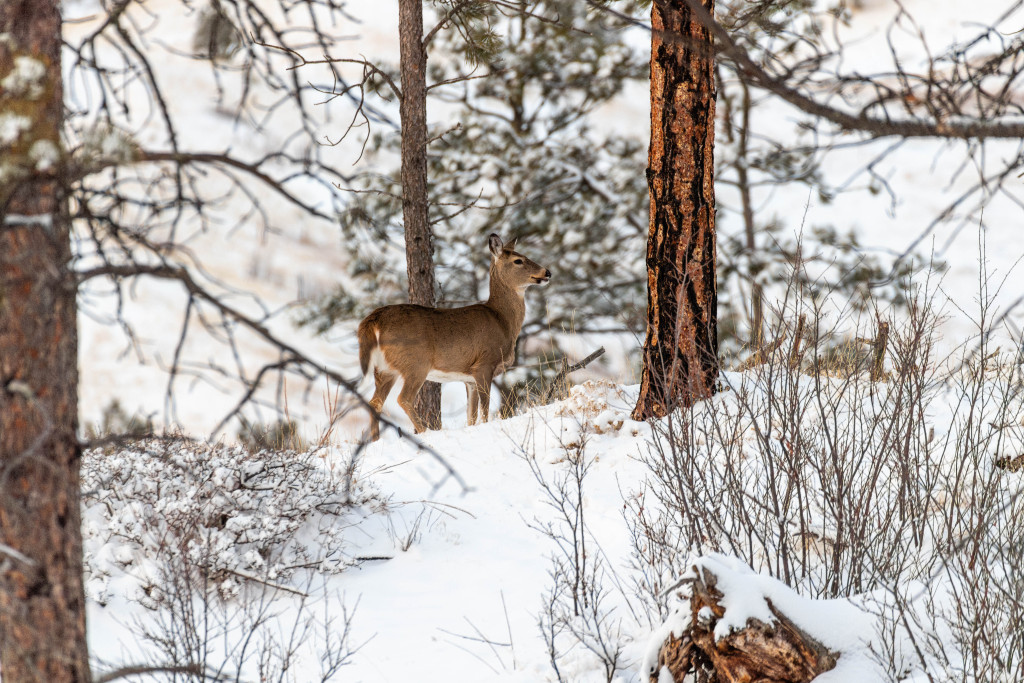
Diet and Feeding Habits
Both species are herbivores and consume a similar range of vegetation, including grasses, leaves, shrubs and trees. However, their specific food preferences can vary depending on their habitat. White-tailed deer often feed on a variety of vegetation, including acorns, berries and the leaves of deciduous trees. They are also known to browse on agricultural crops, which can sometimes lead to conflicts with farmers.
Mule deer, in contrast, are more likely to feed on shrubs and woody plants, including sagebrush and juniper. Their diet is adapted to the more arid landscapes they inhabit, and they tend to avoid agricultural areas in favor of more open, natural vegetation.
Reproductive Behavior
Both species have similar reproductive cycles, with the rut (breeding season) occurring in the fall. Males of both species compete for mates during this time, with white-tailed deer becoming more solitary as they seek out females. Female deer typically give birth to one or two fawns in late spring or early summer, although twins are more common in white-tailed deer. The reproductive behavior of both species is timed to ensure that the young are born when food is most abundant, giving them the best chance of survival.
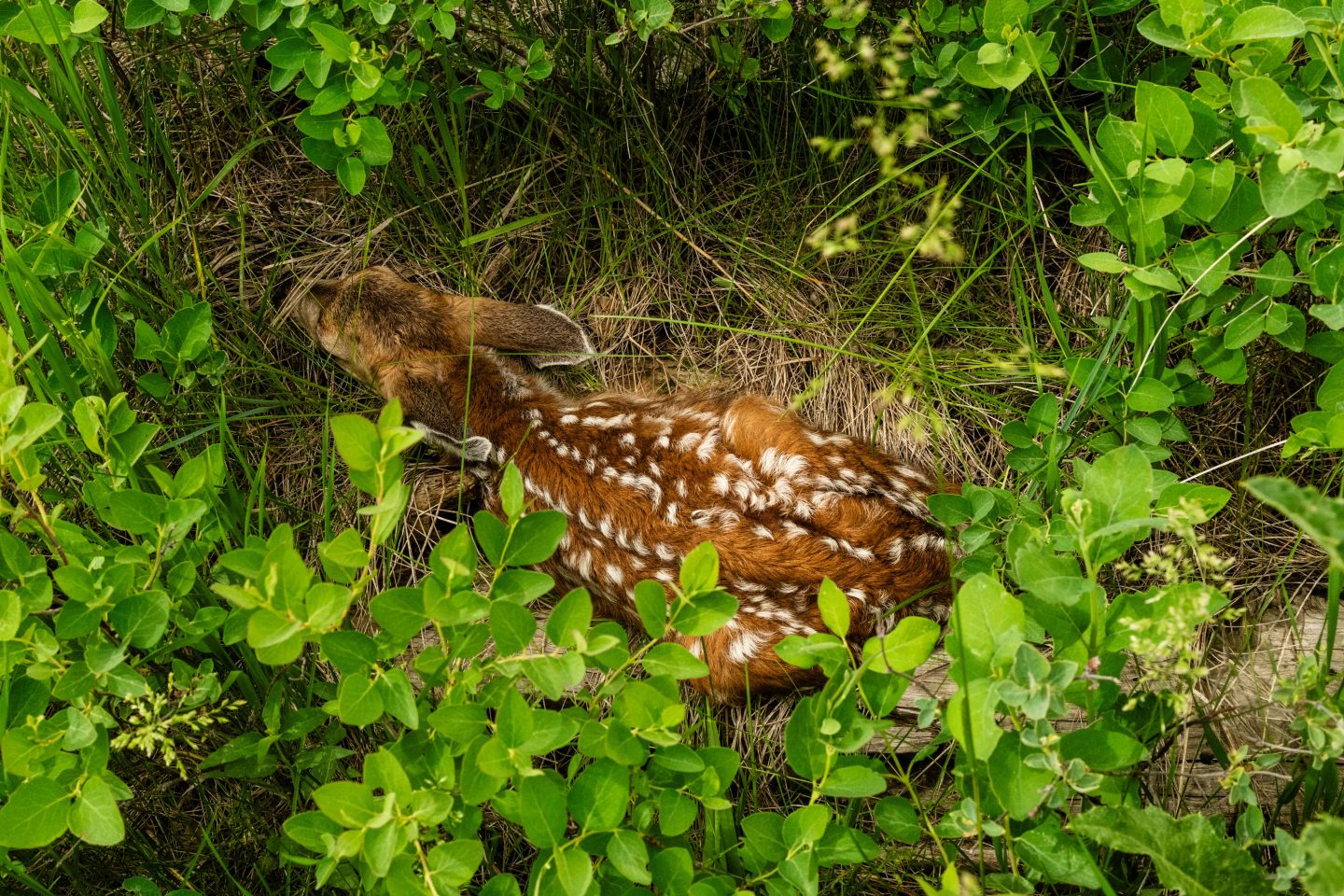
Conservation & Management
Both white-tailed and mule deer are abundant in Nebraska, but their populations are managed differently. White-tailed deer are more common and widespread, with larger populations throughout the state. They are regulated through hunting seasons to maintain sustainable populations and prevent overgrazing.
Mule deer, with their more restricted range, are also managed through hunting seasons, but their populations in Nebraska are generally smaller and more stable. Conservation efforts for both species focus on maintaining healthy habitats, managing deer populations to avoid overgrazing, and ensuring that hunters follow responsible practices to support sustainable deer populations.
While white-tailed deer and mule deer may appear similar at first glance, they each possess unique traits that make them integral to Nebraska’s ecosystems. Despite these differences, both species share important ecological roles, from controlling vegetation to supporting local wildlife through their interactions with predators and other species. Understanding these physical, behavioral and ecological distinctions enhance our appreciation of Nebraska’s diverse wildlife and underscores the importance of conservation efforts to ensure these species continue to flourish in their respective habitats.
